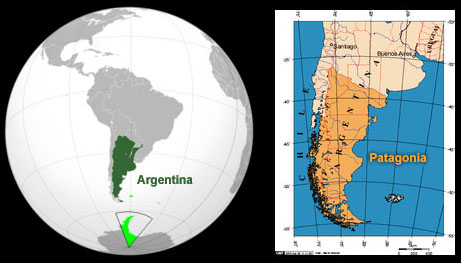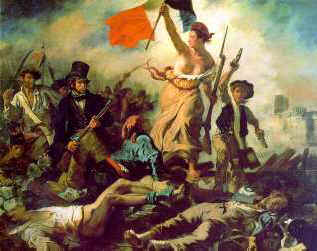Bigfoot, giant foot, giants... Genesis 6, the Nephilim, heaven-earth interbreeding, i.e. human genetic manipulation ('guided evolution'):
Book of Genesis chapter 6: And it came to pass, when men began to multiply on the face of the earth, and daughters were born unto them, That the sons of God saw the daughters of men that they were fair; and they took them wives of all which they chose. [...] There were giants [Nephilim] in the earth in those days; and also after that, when the sons of God came in unto the daughters of men, and they bare children to them, the same became mighty men which were of old, men of renown. And God saw that the wickedness of man was great in the earth, and that every imagination of the thoughts of his heart was only evil continually. And it repented the LORD that he had made man on the earth, and it grieved him at his heart. And the LORD said, I will destroy man whom I have created from the face of the earth; both man, and beast, and the creeping thing, and the fowls of the air; for it repenteth me that I have made them. But Noah found grace in the eyes of the LORD.
A monstrous Sin deemed irreversible, Earth had to be cleansed by a Great Flood.
Sin is the name of a Sumerian (and Minaean) god of the Moon...
Still standing after the Flood as 'Noah'.

A forbidden 'lunar strain' of mankind...
A 'Diana bloodline'.
* * *
Diana = Bigfoot = Nephilim = Noah

Argentina is both a moon...
...and a Bigfoot:

...making headlines the day before Michael Jackson's death:

Jun 24 Gov. Sanford admits to extramarital affair
with Argentine woman
For all intents and purposes a missing person from June 18 until 24 (i.e. around Prince William's birthday), Governor Sanford spent five days 'crying in Argentina' with 'Maria'...
Maria = Mary = Madonna

Madonna singing 'Don't Cry For Me Argentina'
...in 'Evita' (1996), playing Maria Eva Duarte de Peron, First Lady of Argentina from 1946 to 1952, a Diana-like beloved female figure who died young at the age of 33 (Diana was 36 when she died).
Maria/Mary = Marianne


She is essentially Lady Liberty standing gracefully with her torch in New York and Paris very near where Princess Diana was killed marked by a torch.
She is interchangeable with Columbia - the feminine personification of the United States. It was in the South Carolina state capital Columbia that Gov. Sanford revealed his Argentine affair... echoed by a train collision in the District of Columbia (Washington DC) on June 22:

June 22 DC Metro subway trains collide - 9 dead, 80 injured
Timeline:
June 18-24: Gov. Sanford missing/crying in Argentina
June 21: 'Impact' Part 1 on ABC; Prince William birthday
June 22: DC Metro Red Line trains in collision
June 23: US Moon probes (LRO/LCROSS) reach Moon
June 24: Gov. Sanford reveals Argentine affair
June 25: Death of Michael Jackson & Farahh Fawcett
'Metro' means 'meter' in Spanish, Italian, Portuguese, etc. The meter is historically defined as 1/10,000,000 of the distance between the North Pole and the equator through Paris, or in other words the Paris Meridian between the North Pole and the equator. The Paris Meridian is also the 'Rose Line' (an esoteric concept popularized by The Da Vinci Code) i.e. a 'Red Line'...

DC Metro Red Line = French/Columbian Rose Line
...traditionally implying the Blood Royal/Sangraal or the Marian/Columbian Bloodline of the Holy Grail.
In Bloodline of the Holy Grail Laurence Gardner writes of the House of Stuart, the royal bloodline to which Princess Diana and her children belong (pp. 344-5):
The senior Stewart descent goes all the way back to King Arthur's father, King Aedan of Scots, on the one hand and to Prince Nascien of the Septimanian Midi on the other. The Scots descent traces further back through King Lucius of Siluria to Bran the Blessed and Joseph of Arimathea (St James the Just), while the Midi succession stems from the Merovingians' male ancestral line through the Fisher Kings to Jesus and Mary Magdalene. Conjoining the lines from their 1st-century points of departure, the descent is in the succession of the Royal House of Judah. This is a truly unique line of sovereign lineage from King David in one of the key descents which comprise the Bloodline of the Holy Grail.
Nephilim/Bigfoot bloodline = Moon/Diana bloodline = Rose Line = Bloodline of the Holy Grail = Stuart Bloodline (?) = Princess Diana bloodline...
Was Princess Diana a product of a particularly special strain of the Grail bloodline and the Stuart bloodline? Perhaps (argued for instance in Princess Diana: The Hidden Evidence). But that's speculative and should be treated as a storyline rather than fact. It may well be that the name 'Diana' was all it took to make her 'special' in the esoteric context of Grail symbolism.
Nevertheless there is an interesting dichotomy in the current British Royal Family configuration more or less pitting the House of Windsor (Queen, Charles, etc.) against the House of Spencer/Stuart (Diana, William & Harry). The House of Windsor stems from the House of Hanover which back in the 18th century supersede the House of Stuart with a transitional period of King William III of the House of Orange (joint rule with his Stuart wife Mary II) sandwiched in between who acceded to the throne following the questionable removal of Stuart monarch King James II - an event of great significance for the 'Grail bloodline'. Following two years of challenging the 'userpers', James and his supports the 'Jacobites' were resoundingly crushed at the Battle of the Boyne on July 12, 1690, annually celebrated to this day as Orangemen's Day (which at the time using the old-style calendar was July 1st, Princess Diana's birthday).
That paved the way for the Parliament-centered rule of the incoming Germanic House of Hanover which would morph into today's House of Windsor. In that sense, the British Royal Family as it exists today stands in opposition to the supposed 'Grail bloodline' (the Stuarts), reflected in the Windsors' not-so-friendly relationship with Princess Diana. The Diana family in this context would at least symbolically (possibly literally) represent the special strain of the House of Stuart crawling its way back to the throne, with Prince William now just one or two steps away from destination. Reenacting, in a sense, the 'Return of King Arthur' - 'Once and Future King'.

